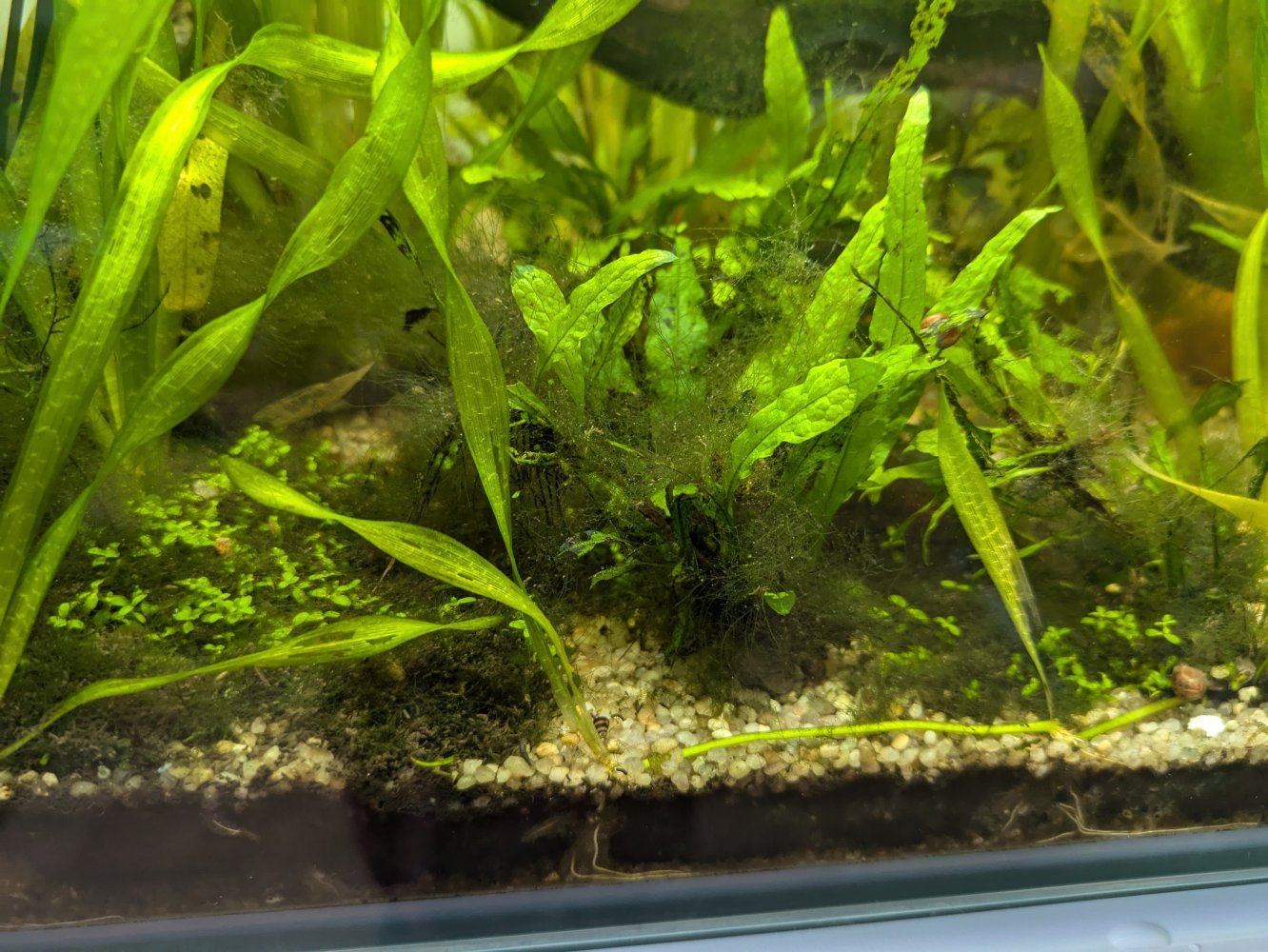Great to see the forum back up! 🎉
I am here again seeking advice for my low tech tank (full details here - My first adventure into aquascaping - Aquael 125L Walstad).
About 6 months ago I added a marimo moss ball I was given by someone online which unfortunately I now believe introduced Cladophora algae into my tank.
There's a video about Cladophora here which does not fill me with confidence!
I've tried reducing the light (for a while just using one of the two lights on the tank, and currently the lights are on approx 8 hours/day).
I don't add nutrients to the tank and have plenty of other plants, including lots of floating plants, who should be soaking up the excess nutrients.
I bought some API algae fix which seems like my only remaining option. I plan to run an experiment with using different concentrations in glasses of water outside of the tank to gauge if it's likely to help.
Anyone else have experience with Cladophora algae or API algae fix? What worked for you?
1. Size of tank in litres. 125L
2. Age of the set - up. 1 year
3. Filtration + Media/Sponges. Aquael pat mini
4. Lighting and duration. 8 hours, 2 x 1270 lumen LED tubes
5. Substrate. 4 parts aquatic compost and one part Melcourt farmyard topped with dennerle crystal quartz gravel
6. Co2 dosing or Non-dosing. None
7. Fertilizers used & Ratios. None
8. Water change regime and type. Infrequent ~10% water changes; dGH 8.
9. Plant list + When planted. Lots - crypts, vallisneria, anubias, ferns, floaters. Planted varying times.
10. Drop Checker. None
11. Inhabitants. 4 honey gourami, ~11 otocinclus, ~8 pygmy cories, ~18 CPDs, 5 black panther snails + babies, Ramshorn snails
12. Full tank image & Surface image.
I am here again seeking advice for my low tech tank (full details here - My first adventure into aquascaping - Aquael 125L Walstad).
About 6 months ago I added a marimo moss ball I was given by someone online which unfortunately I now believe introduced Cladophora algae into my tank.
There's a video about Cladophora here which does not fill me with confidence!
I've tried reducing the light (for a while just using one of the two lights on the tank, and currently the lights are on approx 8 hours/day).
I don't add nutrients to the tank and have plenty of other plants, including lots of floating plants, who should be soaking up the excess nutrients.
I bought some API algae fix which seems like my only remaining option. I plan to run an experiment with using different concentrations in glasses of water outside of the tank to gauge if it's likely to help.
Anyone else have experience with Cladophora algae or API algae fix? What worked for you?
1. Size of tank in litres. 125L
2. Age of the set - up. 1 year
3. Filtration + Media/Sponges. Aquael pat mini
4. Lighting and duration. 8 hours, 2 x 1270 lumen LED tubes
5. Substrate. 4 parts aquatic compost and one part Melcourt farmyard topped with dennerle crystal quartz gravel
6. Co2 dosing or Non-dosing. None
7. Fertilizers used & Ratios. None
8. Water change regime and type. Infrequent ~10% water changes; dGH 8.
9. Plant list + When planted. Lots - crypts, vallisneria, anubias, ferns, floaters. Planted varying times.
10. Drop Checker. None
11. Inhabitants. 4 honey gourami, ~11 otocinclus, ~8 pygmy cories, ~18 CPDs, 5 black panther snails + babies, Ramshorn snails
12. Full tank image & Surface image.
Attachments
Last edited:







